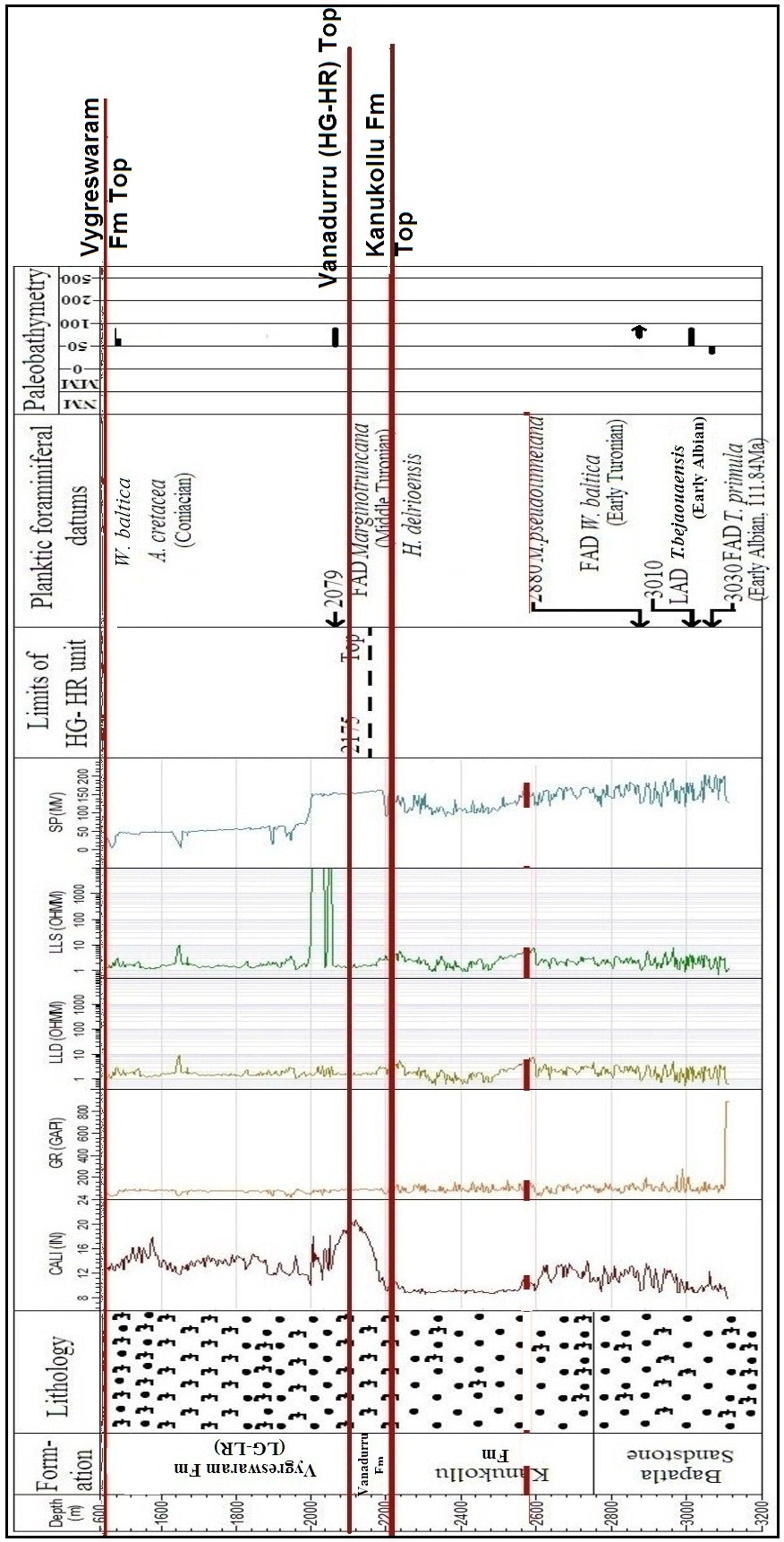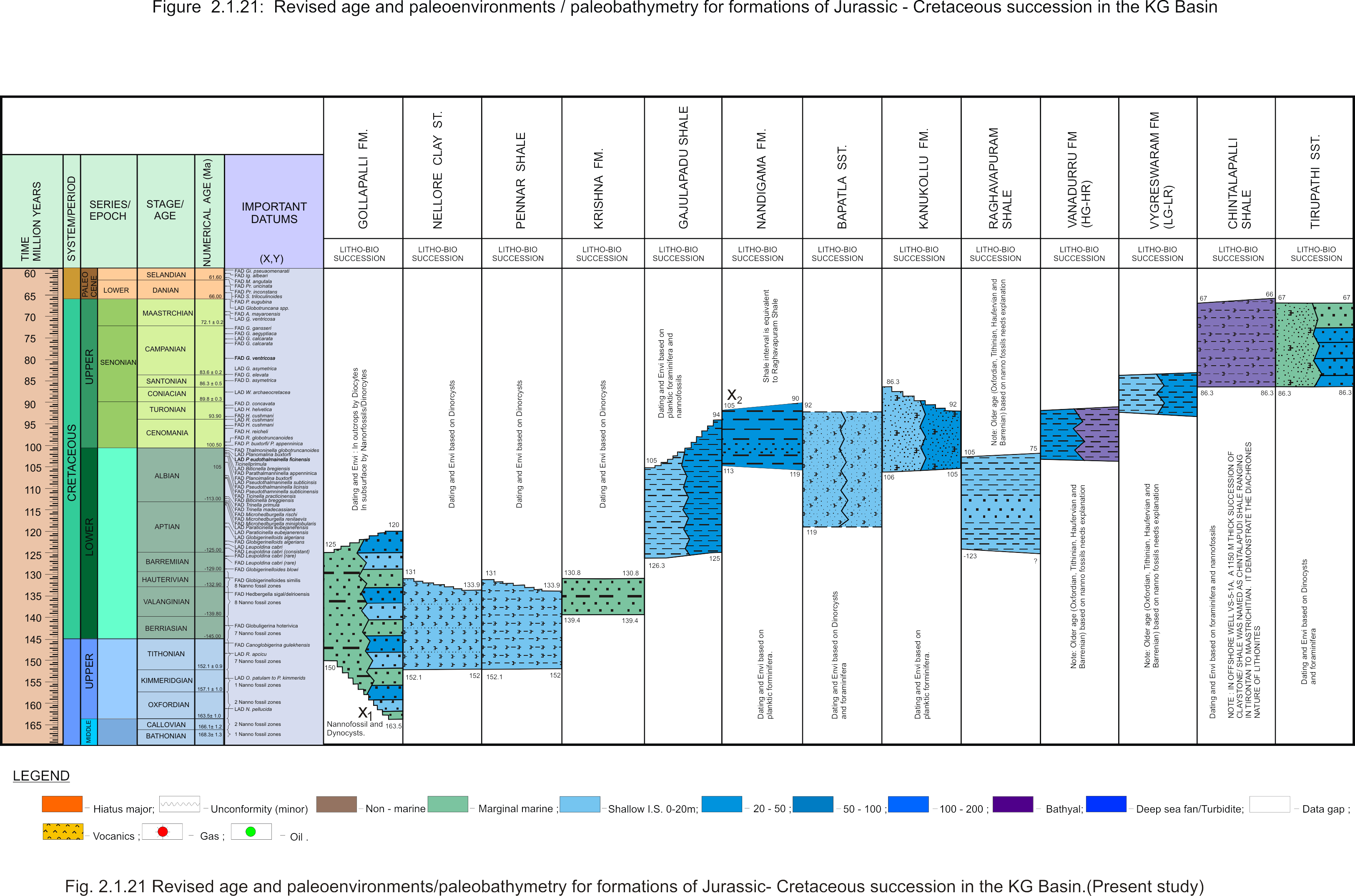Kanukollu Fm
Type Locality and Naming
BASINAL: The type section is located at exploratory well Kanukollu-A (depth interval: 2850-2195m), in the Gudivada graben. The hypostratotype is in the well Gajulapadu-A (depth interval: 2290-1750 m). It was named after the Kanukollu village by ONGC team steered by Venkatarengan et al. (1993) and issued as Document-VII by KDMIPE, ONGC, Dehradun (1993). [Original Publication: Rao, G.N. (1990) Subsurface stratigraphic nomenclature of Krishna-Godavari Basin, ONGC, unpublished report.]. Reference well: Gajulapadu-A, Interval 2290-1750 m and thickness 540 m.
Synonyms: Kanukollu Sandstone
[Figure: Map showing the locations of designated holostratotype section for the formation in the KG Basin (After ONGC, Pandey and Dave, 1998) in Raju et al., 2021, ONGC Bulletin, Special Issue, Vol. 56, No. 2]
Lithology and Thickness
Sandstone. It consists mainly of medium- to fine-grained, moderately hard and compact, greenish-gray sandstone with occasional reddish-brown claystone. Sandstones are occasionally calcareous, micaceous and pyritic and the claystones are silty, hard, compact and non-calcareous. Its thickness varies from 390- >850m.
[Figure: Lithocolumn, electrologs, plannktic foraminiferal datums and paleobathymetry in well Kanukollu-A (after Bijai Prasad, 1999)]
[Figure: A revised stratigraphy chart for the Jurassic and Cretaceous of the KG Basin showing lithological units, their age limits and paleoenvironmental setting (present study) in Raju et al., 2021, ONGC Bulletin, Special Issue, Vol. 56, No. 2]
Relationships and Distribution
Lower contact
Conformable with the Gajulapadu Fm.
Upper contact
Conformable with the Tirupati Fm.
Regional extent
GeoJSON
Fossils
Planktic foraminifera-Marginotruncana pseudolinneiana, Whiteinella. baltica, Globigerinelloides bejounensis and Ticinella primula.
Age
Depositional setting
Middle neritic.
[Figure: Revised age and paleoenvironments/paleobathymetry of formations of Jurassic-Cretaceous succession in KG Basin in Raju et al., 2021, ONGC Bulletin, Special Issue, Vol. 56, No. 2]
Additional Information



